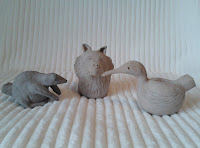When you are looking for cheap flower delivery on high quality flower arrangements, you can trust that you’ll receive the best flowers at the best prices. We don’t sell cheap flowers; we offer an incredible variety of beautiful, fresh flower arrangements at affordable prices. In fact, we offer more flower, plant, and gift options for forty dollars ($40) and under than any of our online competitors.
- turn back the clocks tonight...
- an extra hour of sleep!
- The small dish we are going to create this week is formed with a slab. You could use it for a candy dish, a butter dish, or even a trinket box.I have white sand in mine and put my favourite tiny shells and fossils inside. This close up (top left) shows the texture by rolling the clay on burlap and the shades of brown and violet show up in the pattern. I thought I would try pressing a tiny shell pattern onto the sides of the dish after I put it together. These are the shells (below right) I will try to use To start the project, you should take out 1 sheet of printer paper to make your template. Make pencil marks at 2 inches in from the edge of the paper all the way around, and then draw in the lines with a ruler. You should then cut out the corner pieces as shown (below right).
 You could use a cardboard template for more stability when you cut out the slab or you could just draw around the paper template.
You could use a cardboard template for more stability when you cut out the slab or you could just draw around the paper template.
 Well, it is almost 2:00 am,so I'll wait until tomorrow to get out the clay.
Well, it is almost 2:00 am,so I'll wait until tomorrow to get out the clay.I'm back...
Slice off about a 1 1/2 inch slab of clay from your block. Wedge it well and roll it out into a 1/4 inch thick slab. Use your depth sticks for a cleaner edge to your slab, and roll it out enough to cover the template as shown.
Smooth out your template on top of the slab. It should stay put from the moisture in the clay. Cut out the corner pieces of the clay and straighten your clay edges to match the template. Use a ruler as you cut to ensure straight edges.
Fold up each side to make a box shape, patting the outsides with the ruler or a paddle to straighten any waviness in the clay.
At this point, I took a tiny shell and pressed it firmly into the outside edges of the dish to create a pattern, and I pressed my favourite shell into a pattern on the base, making 3 shell impressions..

I then took extra clay (marble size) and pressed it into a fossil of a shell that created a sprig, a tiny clam shell mold. After I took it out, I cut off the excess clay, scored and slurried the bottom and attached it to the inside base of the dish. I added 3 sprigs in all to create a pattern.


The next step was to score and slurry all four corners to complete the sides of the dish.
Press firmly to attach each side.

 I covered the dish with a grocery bag overnight for the clay to become leather hard. The last step is to attach feet on the bottom of the dish.
I covered the dish with a grocery bag overnight for the clay to become leather hard. The last step is to attach feet on the bottom of the dish.Roll 4 pieces of clay into 4 marble sized balls, score and slurry each foot and each corner of the base where you plan to attach it. Press each foot firmly on the base and turn the dish upright. Apply pressure to the dish to slightly flatten each foot so that it sits evenly.
And there you have it, ready to dry, fire, and glaze. I think I'll use this one for fancy soaps.
See you next week.















































